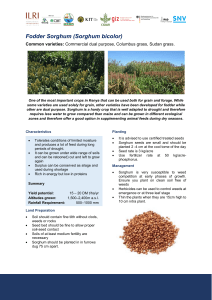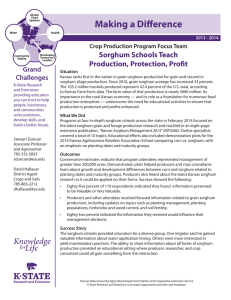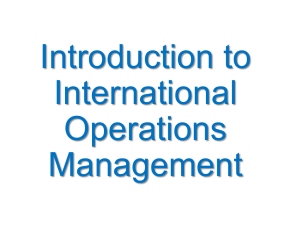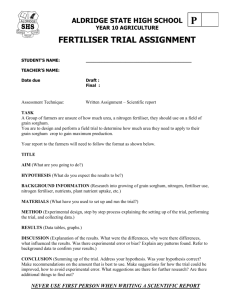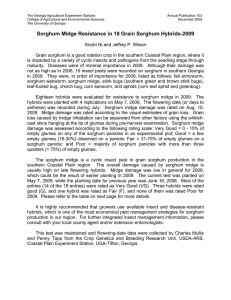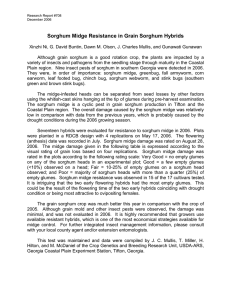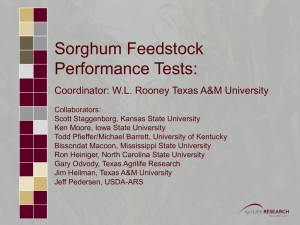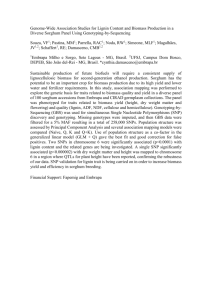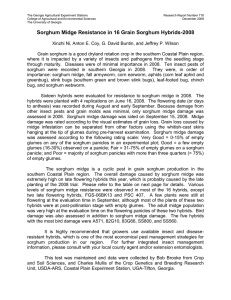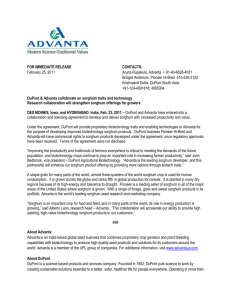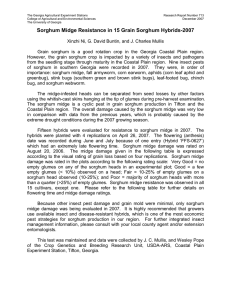ggbl local raw material usage… story so
advertisement
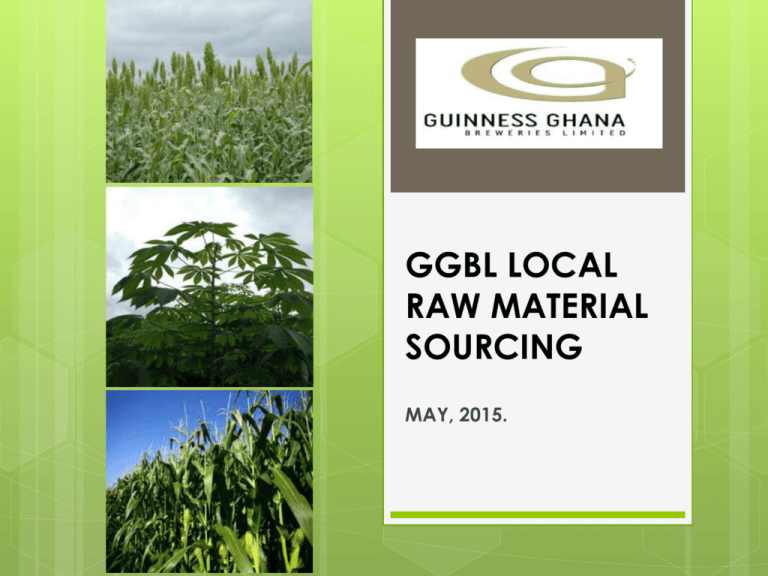
GGBL LOCAL RAW MATERIAL SOURCING MAY, 2015. Outline • • Overview of Diageo (GGBL) Recent strategic shift to increase sourcing from local suppliers • Business and impact case for focus on local sourcing, including quality requirements • Challenges related to local sourcing, including financing needs of suppliers Overview of Diageo (GGBL) • Diageo is the world's leading premium drinks business • Offices in 80 countries, • We also have manufacturing facilities across the globe including Great Britain, Ireland, United States, Canada, Spain, Italy, Africa, Latin America, Australia, India and the Caribbean • GGBL is the only total beverage company in Ghana producing drinks in every category. Recent strategic shift to increase sourcing from local suppliers Generate long-term business value for GGBL with locally and sustainably sourced raw materials which meet quality standards and have a positive impact on the communities and environment in which we operate. Why at the Heart of our Business Grow our Reputation Shape national policy Decrease our Forex exposure Reduce our cost of goods sold (COGS) Reap the opportunities from the local raw materials (LRM) Tax concessions. Actively participate and contribute to the growth of the local economy Creating sustainable value for all value chain actors How GGBL implemented the LRM strategy The Catalyst: Industry wide engagement of Government for excise concessions for the use of local raw materials in production. Granted Dec 2012. Developed our capability (innovation, plant capacity, value chain, policy leadership) to effectively source and utilise LRMs competitively – Estimate on value (GBP 1million) How GGBL implemented the LRM strategy Delivered a sustainable brand value engineering (BVE) agenda on our existing brands using acceptable local substitutes to 30 - 50% LRM Developed and commercialised an accessible beer proposition using 70%+ LRM to DE consumers who currently do not access beer or interact with the category infrequently. Moving consumers away from noncommercial/illicit alcohol. Experience over the past two seasons with Aggregators Sorghum Value Chain GGBL’s intervention in the sorghum value chain begun over 10 years ago but was scaled up following the catalyst of Act 855. Since Dec 2012 we have increased our usage 300% moving from 1,549 to 6,000 (estimate) in 2014. To do this we have: Yield improvements: Embarked on technical intermediation with research institutions and development partners (TechnoServe, RELC, Venture Capital Trust Fund, and MOFA) to increase yields from 0.8tons/ha to 1.7tons/ha. Financial Injection: Partnered with the financial institutions to inject GHS9.4m as inputs and post harvest credit Capacity building: Undertaking training and mentoring of aggregators to enhance their management and organisational skills to be able to manage small scale farmers to produce larger volumes Farm Machinery: Assisted 6 nucleus farmers and 2 aggregators to access 15 tractors under a venture capital arrangement and the SADA project. Ongoing Development Initiative: Initiated the release of USD800,000 by AGRA to provide technical assistance focusing on production cost reduction and improving the efficiency of the value chain Our Value Chain Aggregators/Suppliers • Provide input credit • Technical & Extension support • Manage post harvest activities • Cleaning of Sorghum • Organise logistics Farmer • Undertake primary production • Provide labour – production and processing Financial Institutions GGBL • Off-taker • Technical & Financial Intermediation • Technical Dev’t Partners • Agri-research • Research funding support • Undertake varietal trials • Farmer training • Facilitate development & technology transfer Co-ordinator Our Aggregators AGRIACCESS GHANA LTD-WA (Sorghum) FARANAYA AGRIBUSINESS CENTER LTDGARU (Sorghum) PETOZ INVESTMNETS WA (Sorghum) PRECISION FARMS & OIL (Sorghum) SAVANNA FARMERS MARKETING COMPANY LTD (Sorghum) Socio-economic Impact Creating Jobs for an estimated 14,000 people both directly and indirectly Challenges related to local sourcing, including financing needs of suppliers The critical challenge in sustaining the sorghum value chain is the high cost of production under scored by the following factors: o Low productivity o Rising cost of farm inputs o Poor agronomic and cultural practices The high cost of production impacts negatively on: o Supply volumes o Farmers’ margins o Price of sorghum and its impact on Cost of goods sold (COGS) Therefore to sustain the chain, the focus will be on improving yields and farmer margins through productivity enhancing programs Thanks
